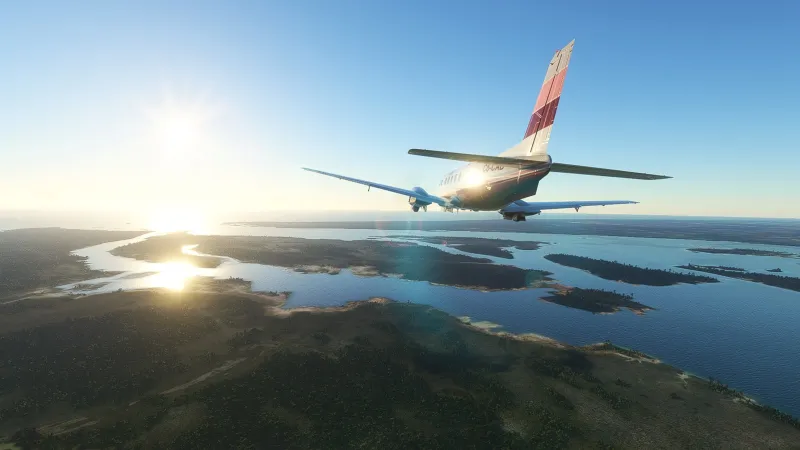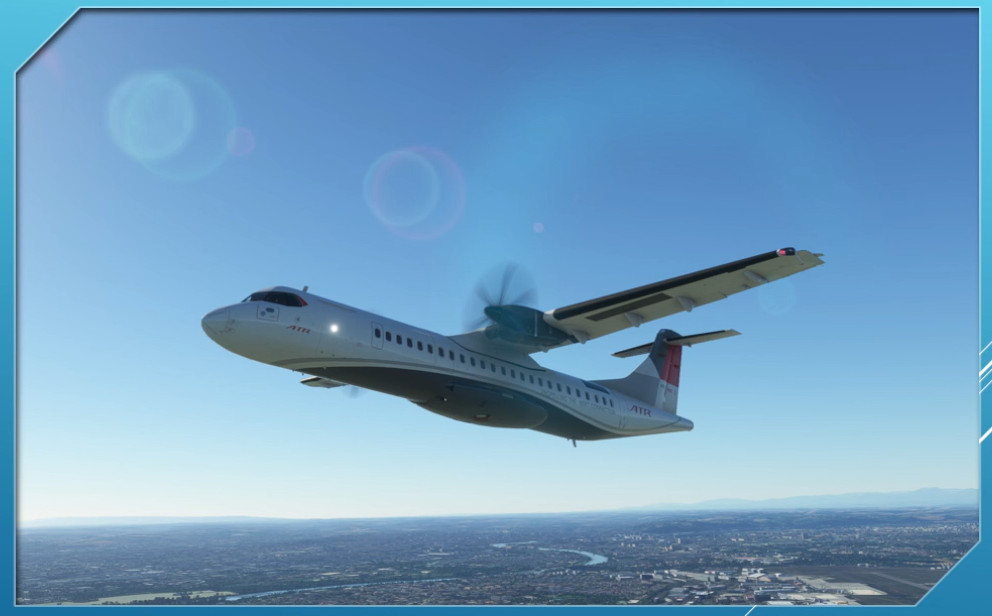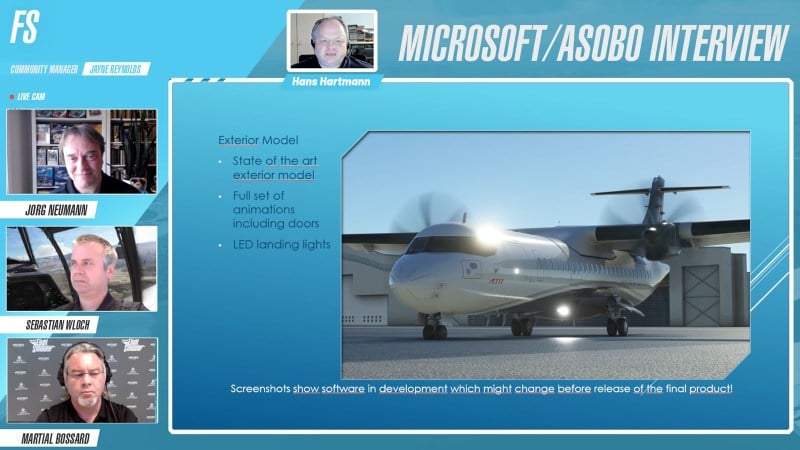In a recent Developer Q&A session, three Microsoft Flight Simulator devs outlined some key details regarding the future of the sim. Held on May 25, this particular livestream provided context on the current state of the sim and some of the big plans the team has for the rest of 2022 and beyond.
A few highlights include new details about Asobo’s “high-fidelity” ATR 42/72-600 turboprop airliner add-on, a commitment on ensuring the stable release of future updates, and some info about new features and improvements that will be coming both soon and further down the line.
Add-on appreciation
Jorg Neumann, the Head of Microsoft Flight Simulator at Asobo Studios, took some time at the start of the session to comment on the inundation of complex aircraft add-ons that have recently come to the sim. These include products such as the PMDG 737, Fenix A320, and Milviz C310, among others. He and the rest of the team are just as excited as customers to see the sim gain so many aircraft of this caliber all at once.
Neumann then said something interesting; Asobo was so impressed by the Milviz C310 that its internal project to develop the aircraft was scrapped, as Milviz covered it so well. He went on to say that there are about 80-100 more aircraft planned to release throughout the second half of this year, and Asobo wants to be available to all add-on makers to ensure their products have a smooth rollout, especially in the event that sim updates cause conflicts with their products.
Smoother skies ahead in the case of future updates
On that note, the devs mentioned that the team has noticed how recent updates to Microsoft Flight Simulator have caused headaches for developers and players. Xbox players in particular recently suffered from some serious crashing issues while some PC players have reported more stutters and problems with framerates than ever since Sim Update 9 dropped a few weeks ago.
The team admitted they’re “upset” by such developments and want to make a change. They’re also investigating these issues and suspect that the VFR Map has something to do with it. Moving forward, there will be a bigger commitment to the “Flighting” phases of Microsoft Flight Simulator updates. These are the closed beta tests that anyone in the community can sign up for during the weeks leading up to a major update. Asobo intends to make these beta phases a little longer to ensure that as many bugs are ironed out prior to the public release.
Moving forward, there will be a bigger commitment to the “Flighting” phases of Microsoft Flight Simulator updates. These are the closed beta tests that anyone in the community can sign up for during the weeks leading up to a major update. Asobo intends to make these beta phases a little longer to ensure that as many bugs are ironed out prior to the public release.
As a result, future Sim Updates may very well take a little longer to come out, with at least a few weeks of delay. So, while this is less frequent than the one-per-month pattern that updates have followed since launch, the expectation is that the overall update experience will be better for everyone.
New features and new toys
Sim Update 10 for Microsoft Flight Simulator is still set to launch in June (as well as a “surprise” that should arrive sometime in mid-June, apparently). It will bring a lot of features in tow, including the implementation of a new Low Power Mode. Accessible via the Dev Menu, this experimental feature will allow the sim to run with less demand on the CPU and GPU, thus reducing usage and lowering power consumption. However, Low Power Mode will come at the expense of framerates. The team has yet to find a way to avoid this, but is looking to improve the feature however it can after user feedback comes in.
In its beta phase, testers will also be able to try out multi-screen support in Sim Update 10. Asobo wants to ensure this feature is stable enough for public release, as it has been a hotly-requested feature since Microsoft Flight Simulator first launched on PC. Other improvements include more ongoing tweaks to seaplane behavior, the implementation of wind gusts, fidelity updates to clouds, and a noticeably intense camera shake feature at touchdown, just to name a few.
The devs also talked support for Nvidia DLSS and AMD FSR, although that won’t be ready for testing just yet. No specific timeframe was given, either. On a similar note, the ATR project was mentioned, and it’s coming along nicely. Asobo is working directly with ATR, which has provided full documentation to ensure the virtual version of the ATR 42/72-600 looks and feels like its real-life counterpart. In addition to the commuter versions, the freighter variant of the 72-600 will also be available.
The team does consider this a high-fidelity add-on for Microsoft Flight Simulator, as it will feature full system and avionics simulation, including modules such as a functioning FMC and weather radar. Both inside and out, Asobo’s ATR will be rendered with great detail, also sporting a fully walkable cabin, paired with interactive, animated surfaces including doors, sun shades, arm rests, and more.
Over the horizon
Throughout the rest of 2022, several new Sim Updates and World Updates are due, along with more aircrafts being added to the Local Legends and Famous Fliers collections. So many details were left unrevealed, such as where the remaining World Updates will take us and the exact models of those incoming aircraft. But all will be revealed in time as Asobo continues down the current “ten year development road,” which it is “still in the early parts of.”
Neumann described the sim as a “live service” title and emphasized the team’s commitment to treating it as such. That’s why more focus is going towards ensuring the stability of the sim at the expense of cranking out a deluge of new features. He gave an example on how the team is continuing to work on the AI Traffic system overhaul; many new models have been made already, but have not been added due to the potential of them causing issues in other areas (likely referring to performance, among others).
This was also brought up in connection to a question asking if the team is considering adding an option to easily restore graphics and sim settings after an update since they often get changed. The devs admitted that it’s a neat idea, but they also mentioned that doing so would require a “drastic change” to how data syncing works between the PC and console editions of the sim. Thus, it’s one of the many hurdles they are trying to vault over to keep Microsoft Flight Simulator outfitted with consistent new features that don’t compromise on its structural integrity.










Published: May 27, 2022 01:30 pm